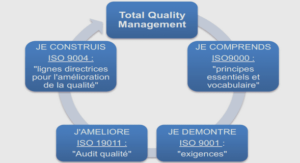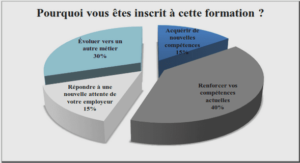A MORPHOSYNTACTIC ANALYSIS OF THE SEEREER A KEMB VERB
Nominalisation Nouns can be got from verbs
This can bring initial and final consonant alternation. However, there are some initial consonants that do not change. A voiced initial consonant turns voiceless as well as the final one: (87) gim (sing) → a kim (a song) (88) xoox (cultivate/farm) → a qooq (cultivating/farming) (89) ret (go) → a tet (a departure) (90) geˀ (see) → a keˀ (eyesight) The consonant /ñ/ does not change: (91) ñaam (eat) → a ñaam (eating/food) → o ñaamoɗ (way of eating) For ñaam and o ñaamoɗ, we can see that the initial consonant ñ has not changed but there is a prefix oɗ added to the verb. A Morphosyntactic Analysis of the Seereer A Kemb Verb 43 An initial voiced consonant becomes voiceless or pre-nasal while the final one does not change: (92) guuɗ (steal) → o kuuɗ (a thief) → nguuɗ (theft) (93) fañ (hate) → o pañ (an enemy) To make a noun, the initial consonant of some verb roots is prenasalised; a voiced one turns voiceless as well: (94) jaw (cook) → njaw (cooking) (95) raw (to get into debt) → ndaw (debt) (96) dap (do the washing) → tap (washing)
Noun Derivation by Suffixation
From a verb, we can get a noun by suffixation with a possible consonant alternation. So, from the same verb dap, we can have: (97) o dapand (a laundry, meaning, a place where the laundry is done) (98) tapir (what you do the laundry with). The verb fiˀ (do) can give: (99) a piˀoɗ (a way of doing) (100) piˀel (something to be done) That passive suffix [-el] can also make names of people most of which are from a hopeless mother whose children tend to die at birth or shortly after. Such a name is given to the next child to hope that, that one will live at last: (101) Gas (dig/bury) → Gaskel (be taken to be buried, to the cemetery) (102) Bet (throw away) → Mbetel (be thrown away) (103) Uup (bury) → Uupel (be buried (104) Bug (like/want/love) → Mbugaan (not liked). This name is made from the negative passive. Nouns can be made from verb adjectives by adding the suffix el, or aan. A voiced consonant becomes voiceless. There can also be no change. A Morphosyntactic Analysis of the Seereer A Kemb Verb 44 The suffix el is to mean the fact of being + adjective: (105) Jigid (tall/high/long) → a cigdel (height/length/the fact of being tall, high or long) (106) Jaak (big/large) → a caakel (the fact of being big/large) (107) Raɓ (short) → a taɓel (the fact of being short) (108) Fariƈ (ugly) → a parƈel (ugliness) (109) Mos (beautiful) → o mosel (beauty/the fact of being beautiful) (110) Yaaj (wide) → o yaajel (width/the fact of being wide) (111) Magin (fat) → o magnel (fatness/the fact of being fat) (112) Xalaf (greedy) → o xalafel (greediness/the fact of being greedy) The suffix [-aan] makes nouns that express an exaggeration on intensity. For that, a voiceless initial consonant of the verb adjective turns voiced. They are got with adjectives expressing taste, smell, touch, and so on. So, they mean bitterness, good taste, good smell, bad smell, heat, cold and so on: (113) Fel (taste good/sound well) → a pelaan (good taste/good sound) (114) Xaaɗ (bitter) → a qaaɗaan (bitterness) (115) Foɗax (sour) → a poɗaxaan (sourness) (116) Xooñ (smell bad) → a qooñaan (bad smell) (117) Sum (hot) → a sumaan (heat) (118) Ɓuuɓ (cold/cool/fresh) → a ɓuuɓaan (coldness/coolness, freshness) N.B. let us notice that none of these nouns can be turned plural. We can say a cek ale (the chicken) and a cek age (the chickens) but not a sumaan age (plural); only a sumaan ale can be said (singular).
Noun Derivation by Reduplication
A noun can be got by reduplicating one verb. When we reduplicate a verb, we get a noun that denotes the doer or agent of the action expressed by the verb: (119) dap (do the laundry) → o taadap (a person doing the laundry, a linen maid) (120) jaw (cook) → o caajaw (a cook) (121) maaɓ (tell lies) → o maamaaɓ (a liar) A Morphosyntactic Analysis of the Seereer A Kemb Verb 45 (122) ñaam (eat) → o ñaañaam (an eater) (123) xoox (cultivate) → o qooxoox (a cultivator) This reduplication can bring initial consonant alternation (dap → o taadap, jaw → o caajaw, xoox → o qooxoox). If the verb has a short vowel, it becomes long at the first syllable of the noun (dap → o taadap, jaw → o caajaw). It also loses its final consonant in the first syllable of the noun (dap → o taadap, jaw → o caajaw, maaɓ → o maamaaɓ, ñaam → o ñaañaam, xoox → o qooxoox).
Nouns made by combining two verbs
O qonopaaf (a ghost) is made from the verbs xon (die) and faaf (pass by) (125) Godagen is the name of a village and derives from the verbs god (cut) and gen (live).
Verb + Noun
A verb and a noun are combined to make one noun: (126) O buf-ndaw is the name of a bird and is made from the verb buf (pick up/gather) and the noun ndaw (ash). (127) O xomnakoy is from the verb xomin (to make defecate) and the noun a koy (a monkey). The sky’s blackness (being so cloudy because is going to rain) will make the monkeys so afraid that they are going to defecate. The Seereer A Kemb verb is very rich in derivation with which, by suffixation, we can make a lot of other verbs with other meanings. Verbal derivation can also make an important number of nouns got by reduplication, composition or suffixation. That verb, root or derived undergoes inflections with grammatical operations related to tense, aspect and mood.
Inflectional Morphology
Verb inflection is mainly aspectual. The verb can express an event that has already happened, meaning a perfective one, or a situation that is running or is going to happen, so imperfective. However, there is subject verb agreement in number and that occurs in two ways: with an initial consonant alternation and an ending in [-yoˀ]. A voiced consonant becomes prenasal, a voiceless one remains voiceless, and there are non-alternating ones. Let us notice that when the initial is a vowel, it does not change. There is also an ending in [-yoˀ] for example in ñaamyoˀ which is the imperative form of eat corresponding to the plural you. A Morphosyntactic Analysis of the Seereer A Kemb Verb 46 Differently from object personal pronouns, subject personal pronouns do not have a fix place. Their place as regards the verb varies according to number or the aspect of the verb itself.
Suffixation Orders Souleymane
FAYE (2013) defines them as exclusive classes of morphemes that have each, a given place in a sequence of morphemes making a word. He adds that when a language uses a series of suffixes amalgamated on a verb root, that successive suffixation follows a hierarchical arrangement called ‘Order’. In Seereer, we have a quite complex way of ordering suffixes and Souleymane FAYE (2013) has identified seven (7) classes of verbs suffixes according to the following order after the verb root. The same is found in Seereer A Kemb: Orders Suffixes 1 and 2 Case Suffixes (Verbal Derivatives) 3 Tense Markers 4 Aspectual Suffixes 5 Forms (Affirmative/Negative) 6 Object (Pronoun) 7 Subject (Pronoun) Table 4: Orders in Verb root Suffixation F., Souleymane (2013: 97) If we consider the utterance ɓogootkatinum (I will not have a bath with it any more), these are the different orders we have: Root Suffixes ɓog Orders 1 st 2nd 3rd 4th 5th 6th 7th Reflexive Instrumental Future Aspect Negation Object Subject -ux -it -k -at -i -n -um Table 5: Example 1 of Verb root Suffixation Orders (F., Souleymane (2013: 97-98)) The hierarchy of the orders does not change from 1 to 5, but for 6 and 7, that can change according to whether the object is a pronoun or a noun. If the object is a noun, it takes the 7th place and the subject is at the 6th place: A Morphosyntactic Analysis of the Seereer A Kemb Verb 47 Ɓogootkatiim saafu (I will not have a bath with soap any more) will be ordered this way: Root Suffixes ɓog Orders 1 st + 2nd 3 rd 4th 5th 6th 7th Reflexive + Instrumental Future Aspect Negation Subject Object -oot = (-ux + -it) -k -at -i -um saafu Table 6: Example 2 of Verb root Suffixation Orders (F., Souleymane (2013: 97-98)) After having seen the suffixation orders the next section will be about some grammatical situations that justify verb inflections, meaning modality, tense, voice and aspect.
Modality, Tense, Voice and Aspect
Verb inflection occurs according to modality, tense, voice and aspect. There are two infinitive forms in Seereer A Kemb, the active infinitive and the passive infinitive. The indicative, the injunctive (imperative, prohibitive and obligative), and the hypothetic are moods and can be found in aspect. Verb inflection can be considered as regards voice and aspect. If we refer to Creissels (2004), voice is any regular relation between the verb morphological change and its valence change. We can therefore have several voices such as the active, the passive, the causative, the middle, the applicative, the antipassive, and so on. There are two aspects: the accomplished also called the perfective, and the unaccomplished or imperfective aspect. Tenses, which are of two categories, simple and compound tenses, can be considered part of aspect. Simple tenses are those in which the verb is without any aspectual or modal auxiliary. As for compound tenses, they require the use of an auxiliary. Both voice and aspect are combined in the conjugation of a verb and are marked in Seereer A Kemb according to tense, number, and form (whether it is simple or focus, or whether it is affirmative or negative. The interrogative form is just the affirmative form in an interrogative intonation, and the interronegative form, the negative form with an interrogative intonation). In this section, we are first going to consider voice and aspect in which we will deal at the same time with tense, number, and affirmative and negative forms. We will not deal with the interrogative and interronegative forms since they are respectively the same in form as the affirmative and negative ones; there is just the interrogation intonation as a difference between them. The focus form will be in the second section not to overload the first one. A Morphosyntactic Analysis of the Seereer A Kemb Verb
Voice and Aspect
As we said above, both voice and aspect are combined in the conjugation of a verb and are marked in Seereer A Kemb according to tense, number, and form (whether it is affirmative or negative, or whether it is simple or focus). Let us notice that the focus form can either apply to the verb, the subject, or the object. Therefore, there are several combinations of voice and aspect such as the active perfective, the active imperfective, the passive perfective, and the passive imperfective. We do know that there are other voices such as the causative, the applicative and so on, but we will stick to the active and passive just for exemplification; the other voices will be seen later on.
The Perfective
Here we can notice the present perfective, the past perfective, and the narrative (with an affirmative intonation).
The Present
The present perfective is either active or passive, affirmative or negative. – The Active Present Perfective: In the active affirmative, there is no specific tense marker; only the aspect and person are marked: • The marker of aspect is [-a] for the singular, and [-eeˀ] for the plural. • The marker of person is that the first person singular /um/ and the second person singular /o/ are suffixed to the verb; the other persons are placed before it. Another particularity is that there can be an initial consonant alternation of the verb in plural: • A voiced occlusive turns prenasalised; • A voiced glottal becomes voiceless; • There are non-alternating consonants. For the verb gat (be back home), we have: (128) Gataam Come.Pres.Perf.1Sg.Sj.Pron I am back home. A Morphosyntactic Analysis of the Seereer A Kemb Verb 49 (129) Gataaˀ Come.Pres.Perf.2Sg.Sj.Pron You are back home. (130) A gata 3Sg.Sj.Pron come.Pres.Perf. He/she/it is back home. (131) I ngateeˀ 1Pl.Sj.Pron Pl.come.Pres.Perf.Pl We are back home. If we consider the first and second persons singular, we can see that a progressive assimilation of the respective pronominal vowel [-u-] and [-o-] by the aspectual vowel [-a-] has given the ending forms [-aam] and [-aaˀ]. The negative form is marked by the morpheme [-eer]. With the same verb gat (come back home), we will have: (132) Gatiim Come.Pres.Perf.Neg.1Sg.Sj.Pron I have not come back home. (133) Gatroˀ Come.Pres.Perf.Neg.2Sg.Sj.Pron You have not come back home. (134) Gateer Come.Pres.Perf.Neg.3Sg.Sj.Pron He/she/it has not come back home. (135) I ngateeroˀ 1Pl.Sj.Pron Pl.come.Pres.Perf.Neg.Pl We have not come back home. N.B.: for the first person singular, the negative form [-eer] and the person um have combined in /-iim/. The morpheme [-eer] and the second person singular o have given /-roˀ/. The third person singular and the third person plural are not expressed; we replace them here by Ø. The verb bears the plural form marks of consonant alternation ng and final vowel o + the occlusive glottal ˀ for all the three persons.
Introduction |



